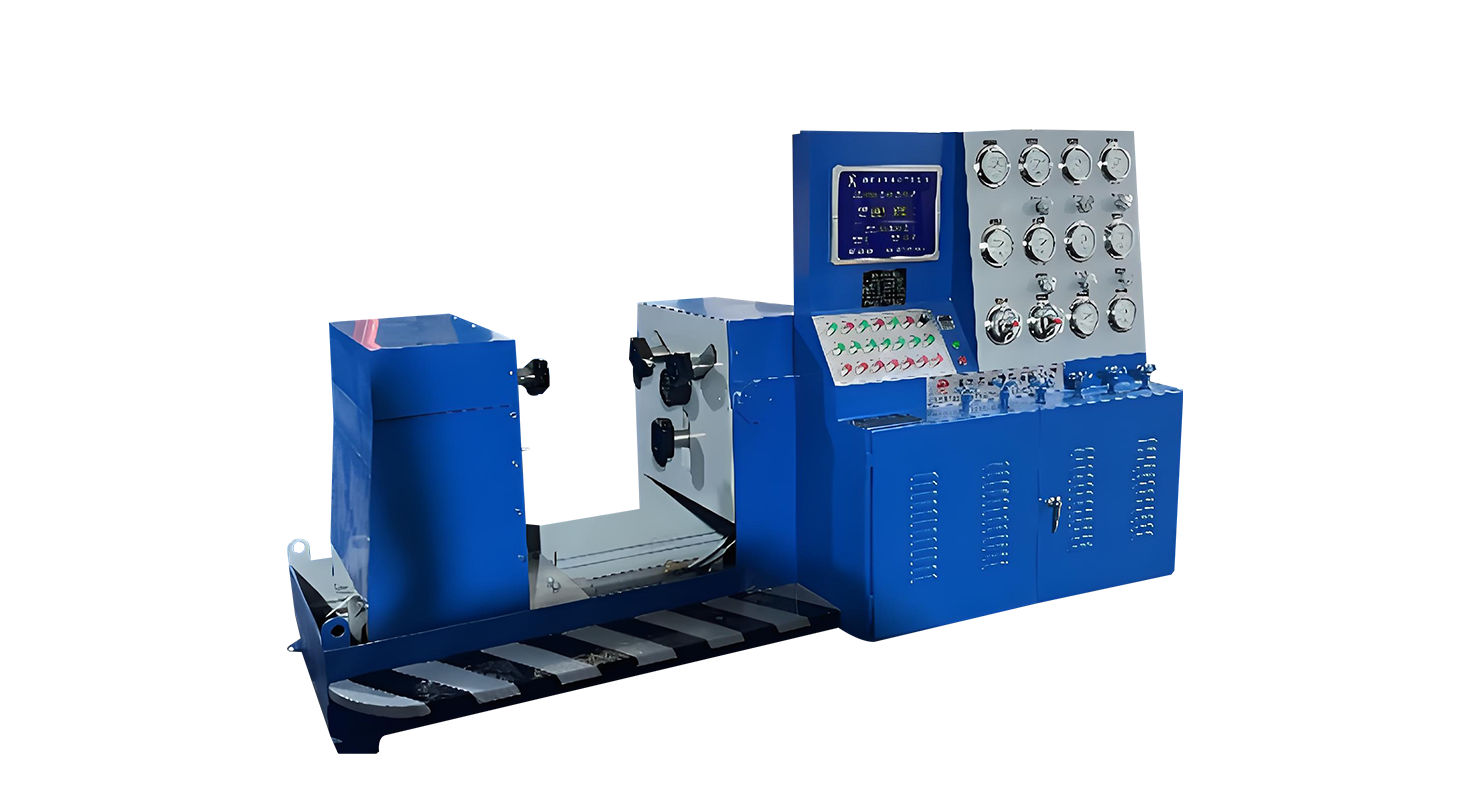Jun 25, 2025
Valve testing is a critical process in ensuring the safety, reliability, and performance of industrial valves. Among the various types of valve test benches available, vertical and horizontal configurations are two common setups used for different applications. Understanding the differences between vertical and horizontal valve test benches, as well as their respective advantages and considerations, can help manufacturers and maintenance teams select the right equipment for their specific testing needs.

Overview of Valve Test Benches
Valve test benches are specialized systems designed to evaluate the performance of valves under various pressure and flow conditions. These test benches typically incorporate components such as hydraulic pressure testing equipment and hydraulic pump testers to simulate real-world operational environments. Testing can involve checking for leakage, pressure endurance, seat tightness, and functional operation.
Hydraulic pressure testing equipment is essential in this context, as it provides the controlled application of fluid pressure required to assess the valves’ ability to withstand operational stresses. A hydraulic pump tester, often integrated into these benches, delivers pressurized fluid at adjustable levels, enabling precise control during tests.
Vertical Valve Test Benches
Vertical valve test benches are characterized by a testing platform where valves are positioned upright. This configuration is often preferred for valves that naturally operate in a vertical position or when space constraints require a compact footprint.
One key advantage of vertical valve test benches is their ability to handle valves with larger diameters and heavier weights, as the vertical setup supports the valve’s own weight more effectively. Additionally, vertical benches facilitate easier observation of valve movement and leakage during tests, which can be beneficial for quality control and troubleshooting.
In terms of integration, vertical test benches commonly include hydraulic pressure testing equipment connected to a hydraulic pump tester, allowing for the application of accurate pressure levels during the testing process. The vertical orientation often simplifies piping and connection arrangements, reducing potential issues with fluid flow during testing.
Horizontal Valve Test Benches
Horizontal valve test benches position the valve to be tested on a horizontal plane. This setup is often favored for valves that are typically installed in horizontal pipelines or when the valve’s design requires testing in a horizontal orientation.
One of the benefits of horizontal benches is the ease of mounting and dismounting valves, especially those with complex actuator assemblies. The horizontal layout also allows for better accessibility to valve components, which can be important for certain types of functional or leakage testing.
Hydraulic pressure testing equipment on horizontal benches is designed to deliver consistent fluid pressure via a hydraulic pump tester, similar to vertical benches. However, the horizontal arrangement may require additional support fixtures to hold valves securely during the application of pressure, especially for heavier valves.
Key Considerations in Choosing Between Vertical and Horizontal Benches
When deciding between vertical and horizontal valve test benches, several factors should be taken into account:
Valve Size and Weight: Larger and heavier valves often benefit from vertical positioning due to better weight support and stability.
Valve Design and Installation Orientation: Valves designed for vertical installation may be more accurately tested in vertical benches, while valves intended for horizontal pipelines might require horizontal testing.
Available Space: Vertical benches typically have a smaller floor footprint, making them suitable for facilities with limited space.
Testing Procedures: The type of test (pressure, leakage, functional) and ease of observation might influence the choice. Vertical benches may offer better visibility for certain tests.
Equipment Integration: Both vertical and horizontal benches rely on hydraulic pressure testing equipment and hydraulic pump testers, but the setup and piping configuration may vary.
Ease of Handling: Horizontal benches can facilitate easier valve handling and assembly/disassembly, which can improve testing efficiency.
The Role of Hydraulic Pressure Testing Equipment and Hydraulic Pump Testers
Regardless of the orientation, hydraulic pressure testing equipment forms the core of valve test benches. This equipment provides the necessary pressure to simulate operating conditions, ensuring valves meet required specifications.
Hydraulic pump testers are integral to these systems, generating controlled fluid flow and pressure. Their ability to adjust pressure levels precisely allows for comprehensive testing, including pressure endurance and leak tightness.
The integration of advanced hydraulic pressure testing equipment with both vertical and horizontal valve test benches enables detailed and reliable evaluation of valve performance.
Both vertical and horizontal valve test benches serve important roles in valve testing, each with distinct advantages depending on the application. While vertical benches offer compactness and effective weight handling, horizontal benches provide ease of valve handling and accessibility. The choice depends largely on valve characteristics, testing requirements, and facility constraints.
Hydraulic pressure testing equipment and hydraulic pump testers are fundamental components of both setups, providing the pressure and control necessary for accurate valve assessment. Understanding the differences and applications of these test benches helps ensure valves are tested effectively, contributing to safe and reliable operation in industrial systems.